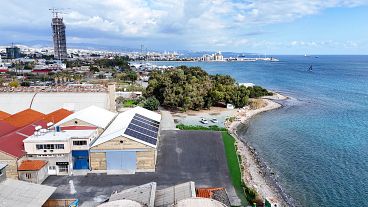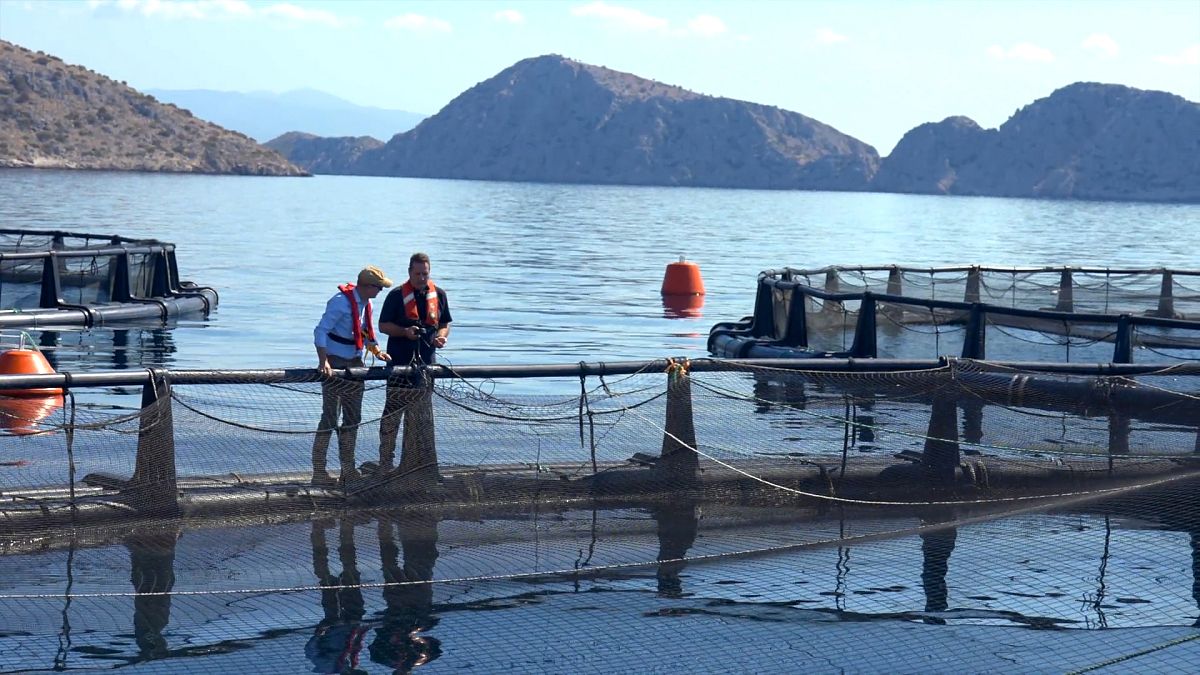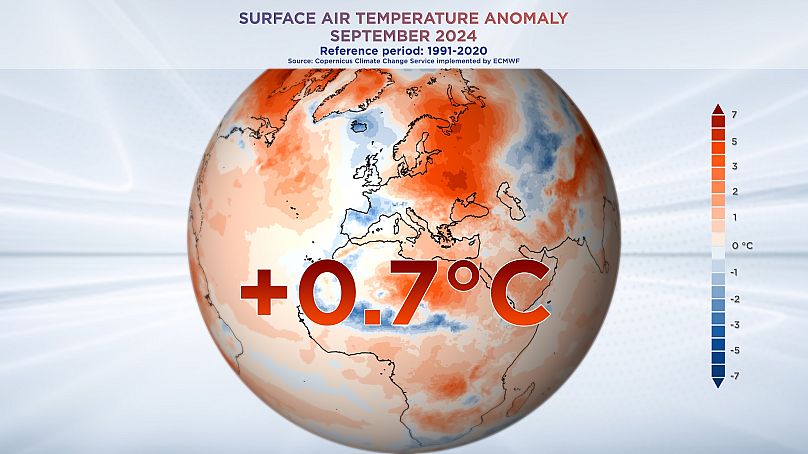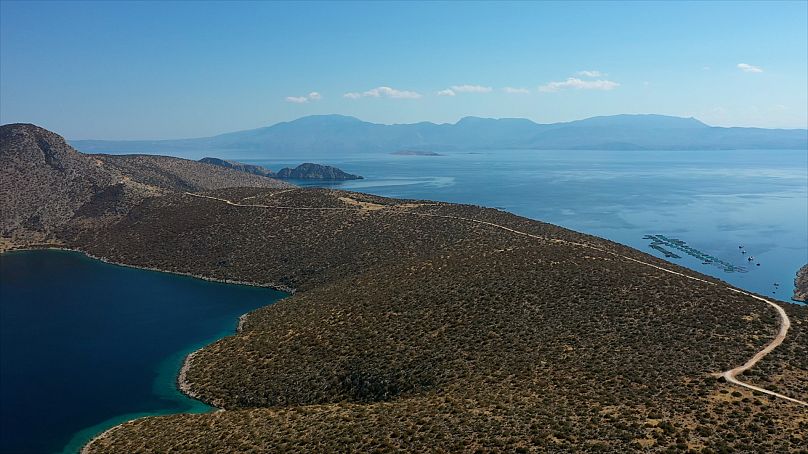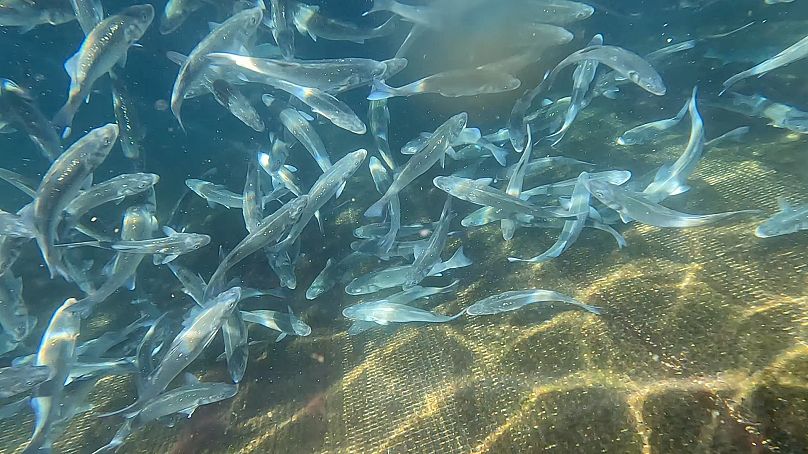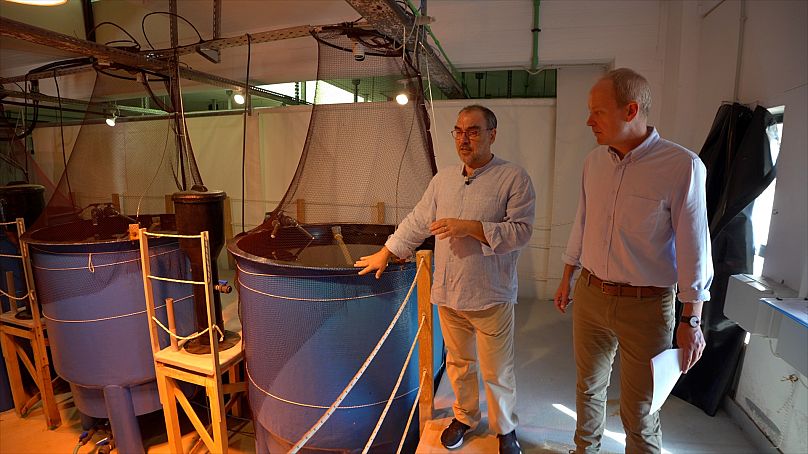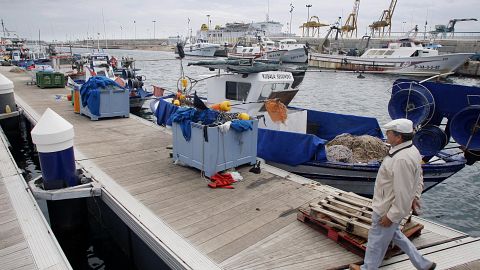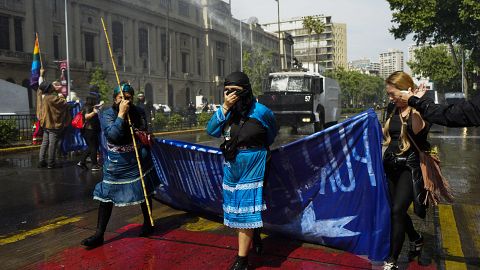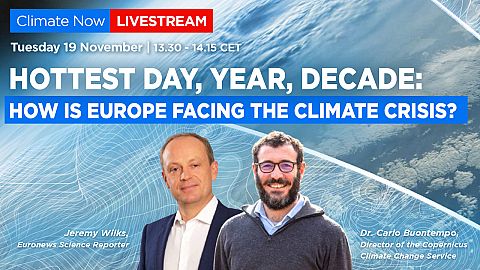In this episode of Climate Now, we ask how fish farmers in the Mediterranean are adapting to climate change. Warmer water temperatures and lower oxygen levels can hit production hard, so scientists are working with aquaculture experts in Greece to find solutions.
As we set off on a new fish harvesting vessel onto the glittering blue waters of the Corinthian Gulf, it's difficult to imagine that this remote coastline could be hit so hard by climate change.
However, if you have a thermometer to hand you see signs of how the seas in this idyllic-looking spot are warming rapidly, just like the rest of the eastern Mediterranean.
"25.5C this time of year, it's a record," says George Tstatsos as he reads the sensor on an early October morning.
Earlier this summer, the water rose to 29.5C, and last year, they broke the 30-degree barrier for three days. Such water temperatures are literally off the charts for fish farmers, who were trained to expect summer highs around 26 to 27 degrees Celsius.
It comes as the Copernicus Climate Change Service reported that September 2024 was the second warmest September on record globally, with temperatures 0.7 degrees Celsius above the 1991-2020 average. The latest data shows that many parts of the Mediterranean experienced their warmest sea surface temperatures on record this summer.
Tsatsos is Operations Director at Kefalonia Fisheries, and he and his team are moving as fast as they can to meet the challenges of climate change. Warmer waters mean a drop in oxygen levels, hampering the growth of the fish, and also encouraging new pathogens. In response, they have moved their cages further offshore to waters with stronger currents and more available oxygen. However, being half a kilometre or more from the coast leaves their equipment open to damage from more intensive storms in recent years.
Another change is on stocking densities. "We put less fish inside of the cage," explains Tsatsos, "in order to ensure that more clean water comes to our fish, as clean water means more oxygen."
The nets themselves are being adapted to the new conditions, with larger holes to allow more water flow.
The fish farm managers are also changing the feeding, offering meal to the fish twice a day to give them more time to digest with the available oxygen.
There are 65 companies operating 328 fish farms in Greece, all facing similar issues as they raise species such as sea bass for local and international markets.
To help them manage their fish in the short term and plan for the long term, scientists at the Hellenic Centre for Marine Research have been studying fish in controlled conditions at their facilities in Crete.
Nikos Papandroulakis heads the research, and shows us different indoor recirculating aquaculture systems where sea bass are kept at 26, 28 and 30 degrees Celsius.
"In conditions where the temperature is around 28-29C, the fish grow less," he explains. "But they also lose their capacity to transform feed to biomass."
"At 33-34C there is an almost complete psychological collapse and the fish are not able to grow and not consume anything."
His research as part of the EU's Climefish project has three key objectives: firstly to gather robust data on how climate change-related effects like temperature, oxygen availability and acidification impact the physiology and performance of the fish, secondly to model the fish performance under different climate scenarios, and thirdly to develop tools to help the farmers in their decision-making.
The result is two applications - one uses satellite data and models to predict the oxygen requirements of the fish a few days in advance to help with feeding, the other allows fish farmers to test different species and locations against decadal climate trends.
"It is very important that the farmers have appropriate tools to adapt today and to plan for tomorrow," he concludes.




